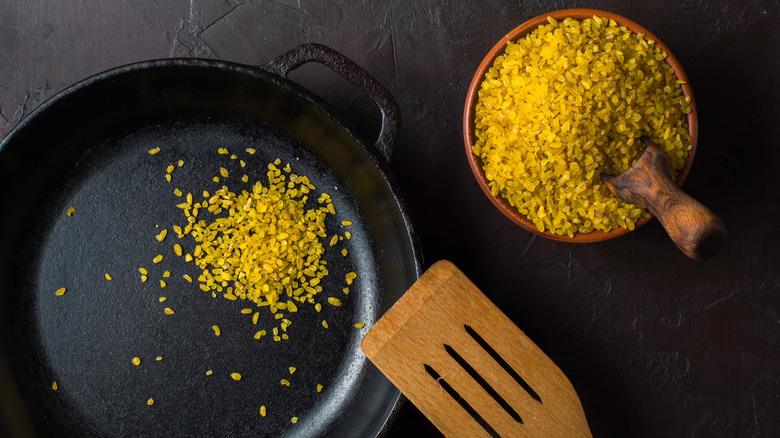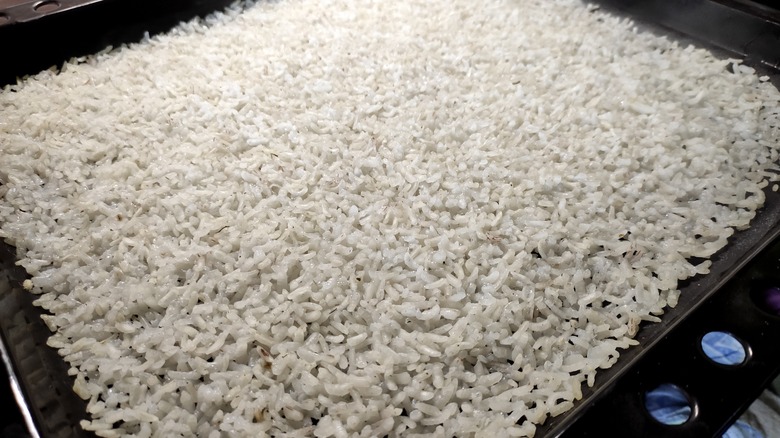Cool Big Batches Of Cooked Grains By Spreading Them On Baking Sheets
If you're an organized cook who stashes big batches of cooked rice, quinoa, or bulgar wheat in the fridge to make meal prep easier, we've got a tip to help you speed up the prep work. Cool larger batches of cooked grains rapidly by spreading them out on baking sheets to increase their surface area. While there are other cooling options, some of them can come with safety concerns.
For example, placing hot grains directly into the fridge can raise the temperature of the other foods on the shelves, which is a huge food safety no-no. The best option? Speed up the cooling process by maximizing the surface area of the grains. Although this can be achieved by splitting the grains into several containers, it also results in lots of boxes and bowls that will eventually need washing.
Spreading the grains on a baking sheet in a single layer is easier because the entire batch will fit on one expansive surface. Once cooled (a process that can take as little as five to 10 minutes) you can place them in a container that fits neatly on your refrigerator shelf and wash your lone baking sheet. Then you can dish out as many grains as you need when it's time for dinner.
Not cooling grains correctly can create safety issues
For food safety reasons, cooked grains should be cooled and placed in the fridge within two hours to prevent the growth of bacteria, such as Bacillus cereus, which is a common bacteria found in rice that multiplies in warm conditions. According to the National Health Service, if you eat cooked rice or other varieties of grains that contain this bacteria it can cause food poisoning. It's therefore vital to prevent bacterial growth by cooling your grains down quickly before refrigerating them.
However, when batch cooking a large volume of grains in a single vessel they're less likely to cool within a safe time frame if you leave them in the pot. This issue occurs because the exposed surface area of the grains is lower as they sit in the pan they were prepared in, which prevents their internal heat from transferring to their external surroundings. Grains will also stay hot for a longer period if they're left to cool in a material that retains its temperature well, such as cast iron.
This is why spreading them out on a baking sheet to let them cool is ultimately one of the easiest and safest options.

